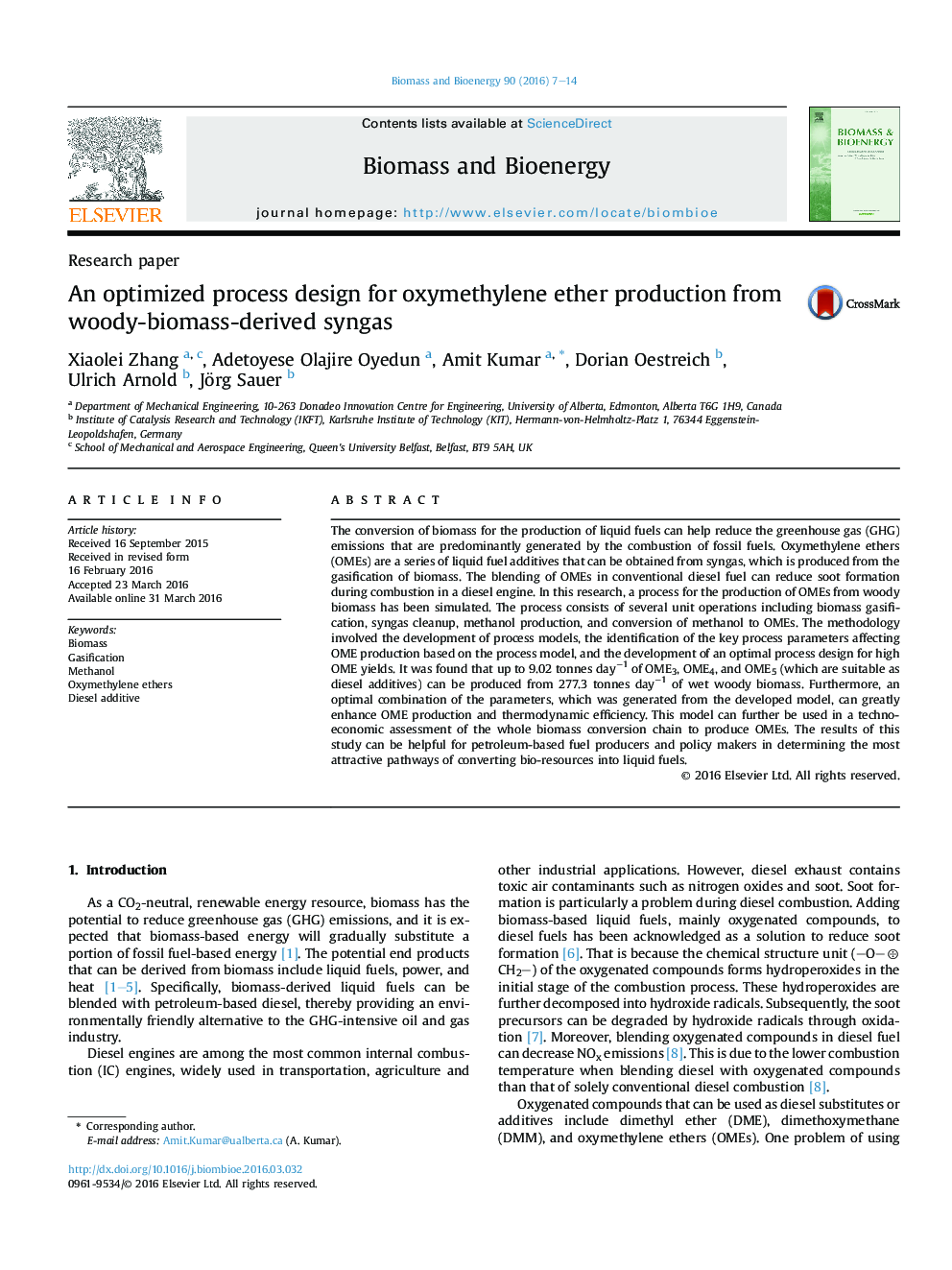| کد مقاله | کد نشریه | سال انتشار | مقاله انگلیسی | نسخه تمام متن |
|---|---|---|---|---|
| 676686 | 1459803 | 2016 | 8 صفحه PDF | دانلود رایگان |
• This paper assesses the production of oxymethylene ethers (OMEs) from biomass.
• A data-intensive process model was developed to simulate the production of OME.
• Optimized conditions of OME production were determined.
• 277.3 tonnes day−1 of wet woody biomass can produce 9.02 tonnes day−1 of OMEs 3–5 through the gasification process.
The conversion of biomass for the production of liquid fuels can help reduce the greenhouse gas (GHG) emissions that are predominantly generated by the combustion of fossil fuels. Oxymethylene ethers (OMEs) are a series of liquid fuel additives that can be obtained from syngas, which is produced from the gasification of biomass. The blending of OMEs in conventional diesel fuel can reduce soot formation during combustion in a diesel engine. In this research, a process for the production of OMEs from woody biomass has been simulated. The process consists of several unit operations including biomass gasification, syngas cleanup, methanol production, and conversion of methanol to OMEs. The methodology involved the development of process models, the identification of the key process parameters affecting OME production based on the process model, and the development of an optimal process design for high OME yields. It was found that up to 9.02 tonnes day−1 of OME3, OME4, and OME5 (which are suitable as diesel additives) can be produced from 277.3 tonnes day−1 of wet woody biomass. Furthermore, an optimal combination of the parameters, which was generated from the developed model, can greatly enhance OME production and thermodynamic efficiency. This model can further be used in a techno-economic assessment of the whole biomass conversion chain to produce OMEs. The results of this study can be helpful for petroleum-based fuel producers and policy makers in determining the most attractive pathways of converting bio-resources into liquid fuels.
Journal: Biomass and Bioenergy - Volume 90, July 2016, Pages 7–14
